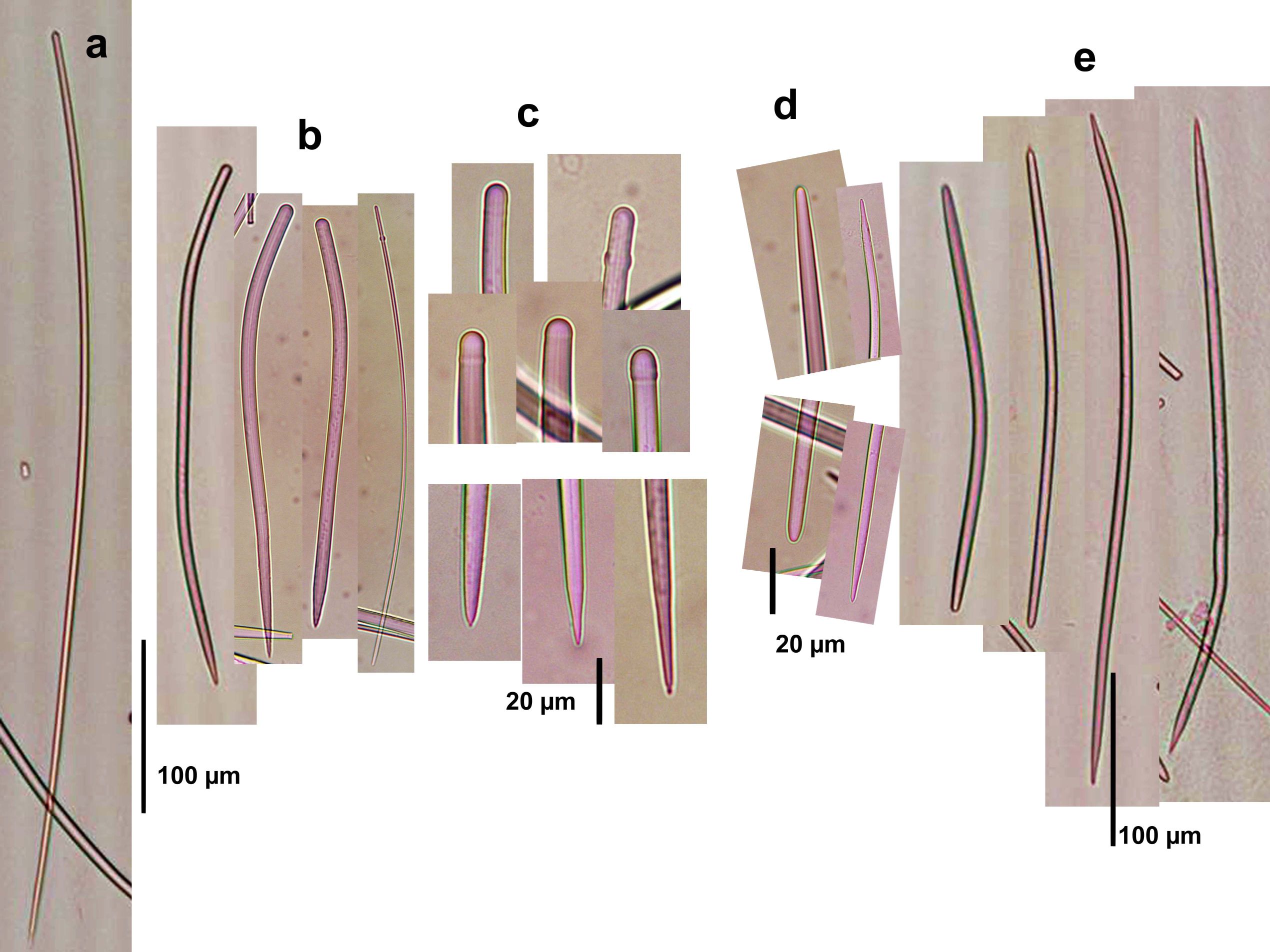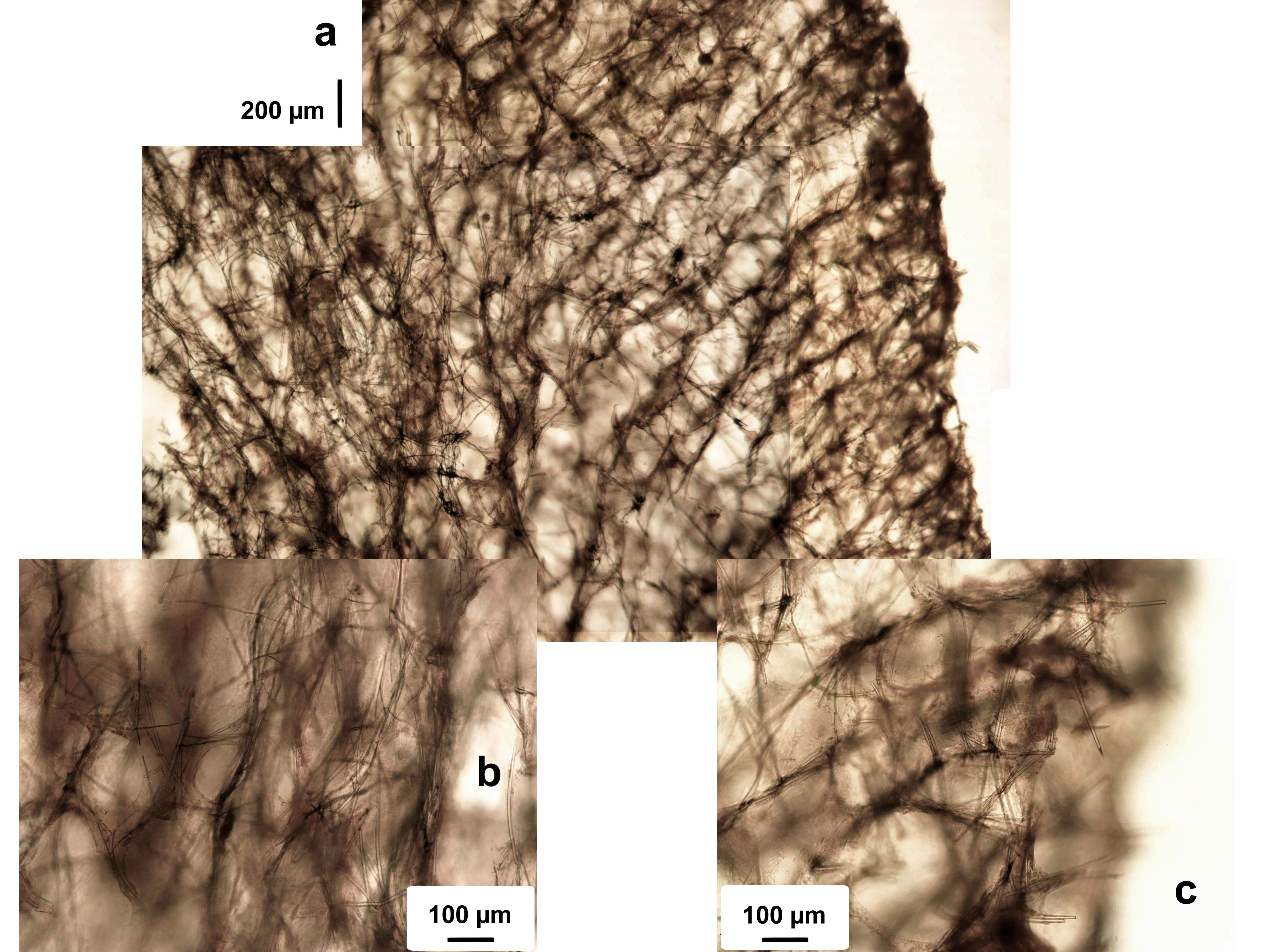the Sponge Guide - www.spongeguide.org
Observed Characteristics:
orange-yellow
tube
soft
Bahamas
Species Description and Notes
Description: Narrow funnell-like tubes, orange yellow to orange, arising from a narrow stalk, single or branched. Tubes up to 20-25 cm tall and 2-3 cm in diameter. Consistency compressible, elastic, somewhat soft. Surface even, smooth, velvety, sometimes with engrossed rings around the tubes. Skeleton as spicule tracts arising at the tube inner side and ascending and diverging radially towards the outer surface; tracts with 1 to up to 4-5 spicules, up to 50-100 µm thick, embedded in variable amounts of spongin; irregularly interconnected by single spicules or up to 4-5 spicule tracts, conforming an irregular reticulation with meshes 100-250 µm wide. Ascending tracts are strongly condensed at the inner surface of the tubes. The outer surface is hispidated by the terminal spicules of the ascending tracts. Spicules in two types: (1) curved styles, with the heads usually smooth or slightly swollen, but in some wider or with a subterminal ring; in two size categories, styles I, 210-350 µm long by 2.5-8 µm wide, the most abundant; and styles II, long and slender, but rather scarce, 480-570 µm long and 5.5-6.5 µm wide. (2) Slightly curved oxea with blunt to acute ends, often asymmetric, 330-470 µm long and 7.5-8.3 µm wide.
Notes: We have seen this species in cryptic spaces in the deep reef walls of the Bahamas. From its tubular form, we initially thought it could belong to the Axinellid tubular genus Auletta Schmidt, 1870, but the inner parts of tubes are not reinforced by sheets of sinuous spicules, as the definition of the genus states. Pipestela Alvarez et al., 1998 is a genus of tubular Axinellid sponges, but containing only oxeas. From its spicules (styles in two categories, oxea), and the axial condensation of the skeleton towards the inner side of the tube walls, it appears to belong to the genus Axinella Schmidt, 1862, as currently defined (Alvarez & Hooper, 2002). There are no Western Atlantic species of Axinella with tubular shape (see Alvarez et al., 1998), so this is probably an undescribed one. Another tubular Axinellid is included in this guide, as Axinella sp.-"orange corrugated tubes". The tubes tend to be thicker and shorter, and from the working name, the external surface is corrugated, not smooth. It has the same two types of spicules, but slightly longer and thicker and the style heads are smooth. The skeleton is also similar, but the condensation occurs closer but not right at the inner side of the tube.
Molecular studies have found that the genus Axinella is polyphyletic, with members spread throughout several families and even orders of Demospongiae (Alvarez et al., 2000; Gazave et al., 2010; Morrow et al., 2012; Redmond et al., 2013). We have decided to maintain the name Axinella for this species until further studies show to which group it belongs.
Tissue and Spicule Images

Spicule Images: a) Styles II; b) styles I; c) ends of styles I; d) ends of oxea; e) oxea. Sample from the Bahamas.
Source Specimen: http://www.spongeguide.org/ thumbs/00048/01406.JPG

Tissue Images: a) Longitudinal section of a tube (external surface on the right); b) magnification of he choanosome; c) magnification at the surface. Sample from the Bahamas.
Source Specimen: http://www.spongeguide.org/ thumbs/00048/01406.JPG
Images
Axinella sp.-"orange-yellow velvety tubes"
Location: Bahamas, Northern Exuma Cays
Photographer: Sven Zea
Location: Bahamas, Northern Exuma Cays
Photographer: Sven Zea
Location: Bahamas, Northern Exuma Cays
Photographer: Sven Zea
Location: Bahamas, Northern Exuma Cays
Photographer: Sven Zea
![<i>Axinella </i> sp.-"orange-yellow velvety tubes" <br />[Bahamas, Northern Exuma Cays]](thumbs/00091/01425.jpg)
Location: Bahamas, Northern Exuma Cays
Photographer: Joseph Pawlik
![<i>Axinella </i> sp.-"orange-yellow velvety tubes" <br />[Bahamas, Northern Exuma Cays]](thumbs/00129/01432.jpg)
Location: Bahamas, Northern Exuma Cays
Photographer: Tse-Lyn Loh